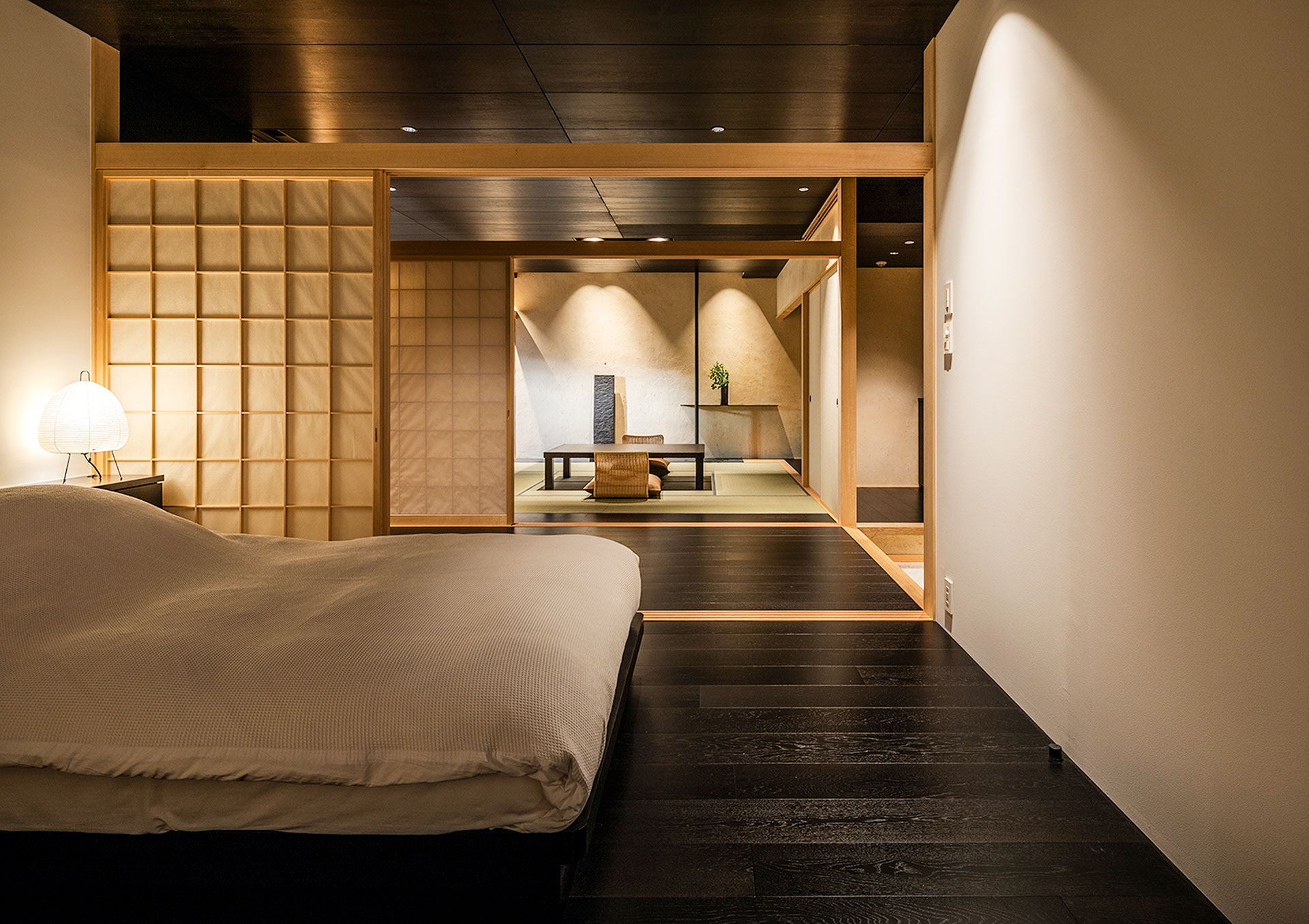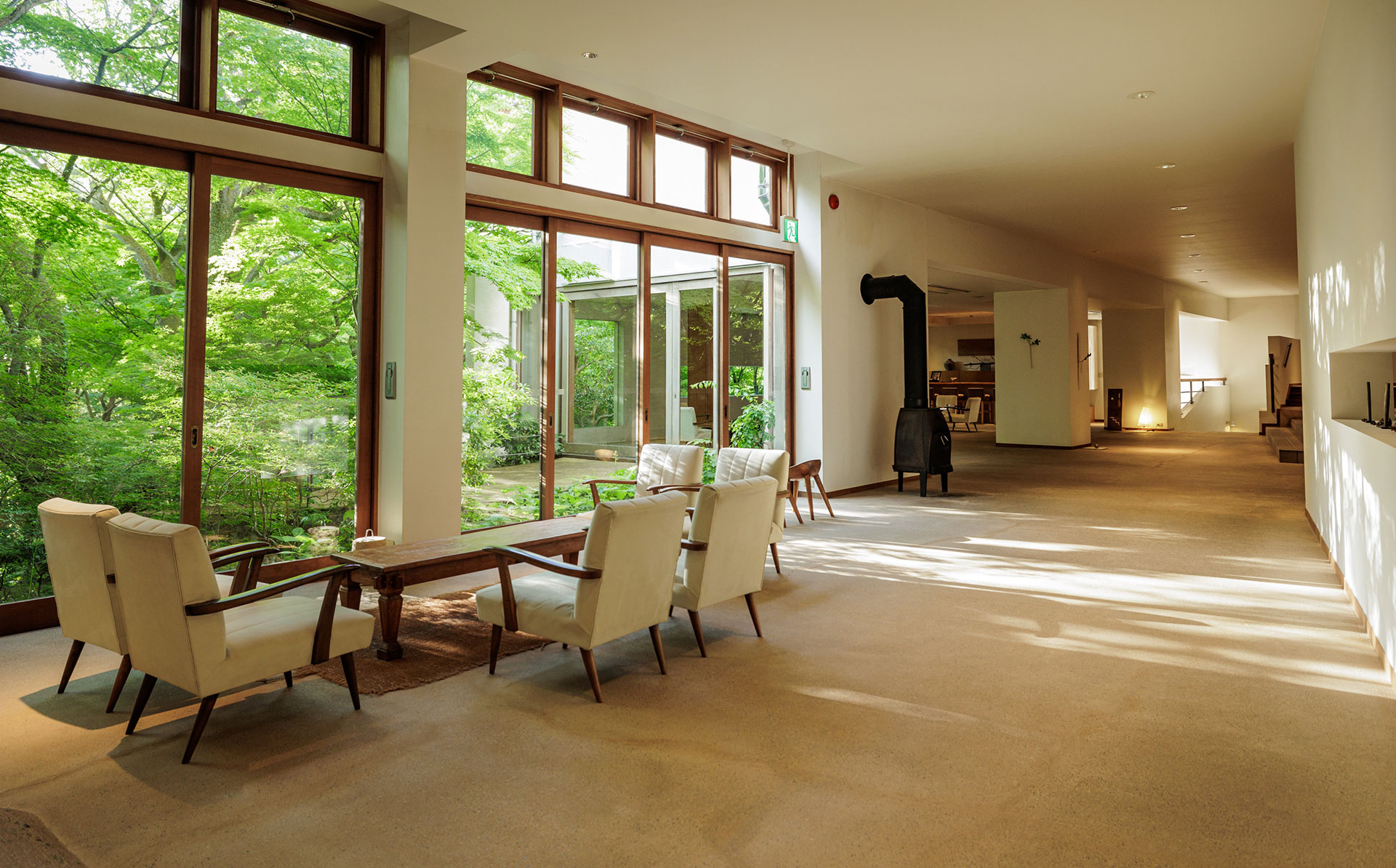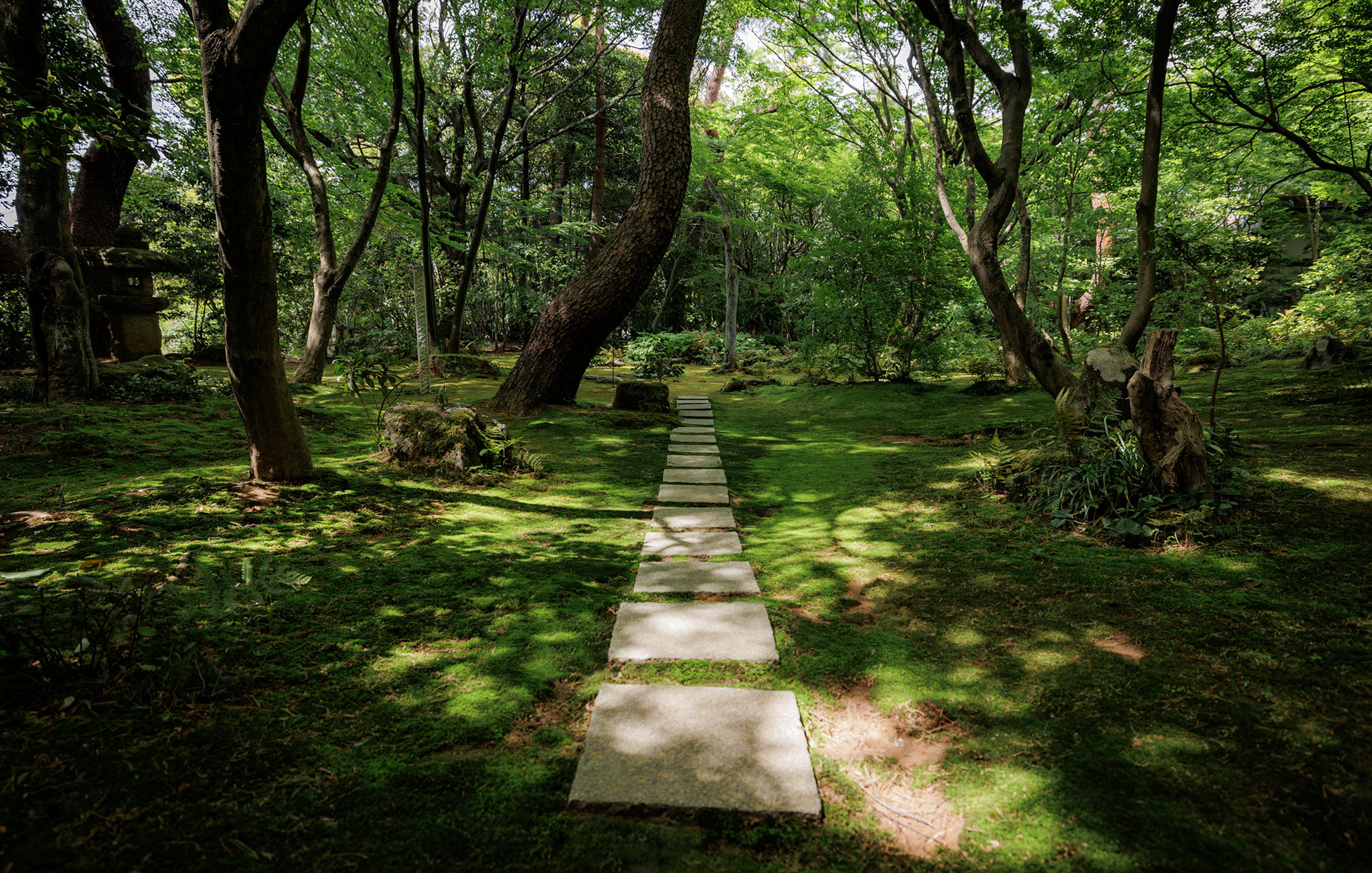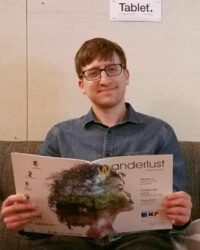
The Japanese ryokan might be the highest form of hospitality, but it’s not a hotel. For the owners of Beniya Mukayu, it’s important that you understand why.
I had never seen a moss map. Mrs. Nakamichi showed me my very first, and it’s just what it sounds like. An illustrated guide, printed and left in each room at Beniya Mukayu, to the botanical treasures in the garden center of her ryokan. The moss map is the result of 20 years of cataloging throughout seasons — the result of a passion for detail.
It’s no exaggeration to say the ryokan offers an elite level of hospitality. Japan’s quintessential, millennia-enduring concept includes multi-course kaiseki dinners and natural hot-spring onsen baths. Those in the know arrive at a ryokan well before evening — at Beniya Mukayu, we’d arrive at daybreak if they’d let us — if only just to stand in the open space of the entrance and to study the garden’s shadows projecting on the earthen floor.
Those shadows are deliberate — a showcase of a phenomenon named komorebi, or the the interplay of light and shadow when the sun filters through the leaves. Another detail.
Thirty years ago, the Nakamichis took over Beniya Mukayu, making Mr. Nakamichi the third generation to run the family business. With just sixteen accommodations in total, it’s small enough that not only will you meet the owners, you’ll have tea served by them. The Nakamichis themselves ceremoniously scoop the matcha from a smooth, handcrafted natsume container as they explain the significance of another archetypal Japanese event. “It’s not only about drinking tea,” they say. “It’s a showcase of Japanese culture and aesthetics.”

That’s the mission statement. That unique floor in the lobby, made from local diatomaceous earth, was the Nakamichis’ first act. Thirty years ago, a typical luxury hotel might drape its floor in thick carpeting. They chose instead organic local material — and brought in Japanese artists and master craftsmen to execute the rest.
In some ways, this is an extremely traditional place. But there is a mix of contemporary elements. Outside the spa is a round black pool, a work by designer Kenya Hara which once sat at the 21st Century Museum of Contemporary Art in nearby Kanazawa. As for the accommodations, just four rooms offer the experience of a traditional futon mattress on the tatami floor. The rest come with two Western-style full-size beds.
And rare among even the top percentile of ryokans, each room here has its own natural hot-spring bath under the open air. And each room faces the garden — not the finely manicured garden of a Kyoto temple or some of the more traditional ryokan, but almost a forest. Besides the moss, 300-year-old pines grow naturally, the better to throw their shadows through large windows into open rooms filled with very little besides their shoji screens and tatami floors.
The concept of emptiness is repeated everywhere here, from the name Mukayu (which itself can be translated to “richness in emptiness”), to the appropriately titled Library Zero, which showcases the work of contemporary artist Tatsuo Miyajima and the hotel’s own architect Sey Takeyama, among others. The uncluttered feeling is explained by the words of one American guest, who told the Nakamichis the experience here made her feel “free to expand.”
You’ll notice we haven’t used the word hotel once in this article — and that’s by design, and by edict from the owners. It’s not to simply to make a point; it’s practical advice. A ryokan isn’t a hotel in the sense that it’s a place to decompress and sleep, an outlet, or even oasis during your trip. A ryokan is the trip. Soak in every detail.
Book Beniya Mukayu on Tablet Hotels.






Nuts & Bolts
A bite-sized breakdown of your most frequently asked questions about Beniya Mukayu.
Who comes here?
Anyone looking for the total ryokan experience: kaiseki dinners, private and communal onsen bathes, and a renowned spa. Beniya Mukayu is three and a half hours by train from Tokyo (as of the new train opening March 2024), or about an hour by plane. An express train runs from Kyoto/Osaka in about two and a half hours.
When’s the best time to visit?
Don’t be afraid to visit in winter; the hot springs are still hot, and the garden is covered in snow. The rest of the year is lovely as well, and in the spring, certain suites (particularly, the Wakamurasaki Suite) develop a privileged view of the century-old cherry blossom tree from a bamboo veranda.
What else is there to do in the area?
Beniya Mukayu sits perched on a hill overlooking the tiny spa town of Yamashiro, where people have been soaking in the springs for at least 1,300 years. Mukayu, close with many local artisans, will organize any number of experiences on your behalf, either on site or at nearby shops: making tea spoons, Wagashi sweets, porcelain, or wood crafts, strolling for plants and flowers, or hiking the local mountain with a stop at a natural cold spring.
40 minutes away, Kanazawa is the capital city of the Ishikawa prefecture, and a gold mine of contemporary arts and traditional crafts — and home to three famous geisha districts, one samurai district, and several renowned museums (the 21st Century museum of Contemporary Art, the D.T. Suzuki Museum, and the National Craft Museum). Try a walk around the Omicho Market for local eats.
Best room for a solo traveler? A couple? A family?
First of all: no kids under seven are allowed at Beniya Mukayu. Second of all: each room faces the garden, and each has a private, open-air onsen hot bath. Third: there is one room type, the Japanese Premier Tatami Garden View Room, that features traditional futon mattresses on the tatami floor. The rest of the rooms offer two Western-style full beds — and each fits two guests max. Larger parties should book multiple rooms.


What’s a design feature I would miss if you didn’t tell me about it?
The three beautiful libraries are in fact an homage to the Buddhist monks who used to study scriptures here, at this same location on the hillside. The Main Library features books on art, design, and local crafts; the Forest Library has a collection on local flora; and Library Zero showcases the work of contemporary artist Tatsuo Miyajima and the ryokan’s own architect, Sey Takeyama.
What’s there to eat?
Meals are prepared with the highest quality local ingredients, and dishes change by the day and according to the season. At breakfast, you can choose from Japanese or Western style; for dinner, expect omakase — as in, a chef’s tasting menu (which can of course accommodate all dietary restrictions). There’s no a la carte ordering here, but you may upgrade to a sushi dinner or a menu that includes in-season dishes like oysters, duck, or snow crab.
Anything to say about sustainability?
Loads. Environmentally speaking, the focus on local ingredients, products, suppliers, and experiences is almost a religion. Consider too all that Mukayu does to preserve a hallowed Japanese tradition.
What’s the final word?
One of the great ryokans of Japan — the passion for detail is miraculous; about equidistant from Tokyo and Kyoto, make a special trip here to appreciate an ancient form of hospitality updated for a new millennium.
Book Beniya Mukayu on Tablet Hotels.


Mitchell Friedman is an editor and social media manager for Tablet and Michelin Guide hotels. He’s been with Tablet since 2018, and wants you to subscribe to our newsletter.

